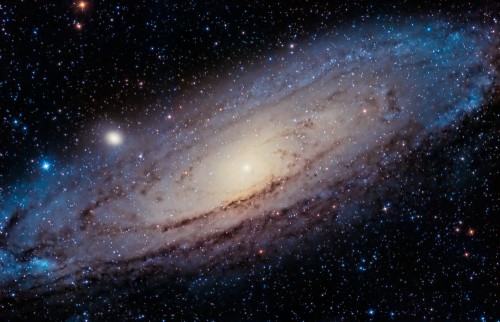The false alert was the result of a rare combination of an alert from the gamma-ray burst detector on the Swift space telescope of an object that was already known before, and a power outage at the Goddard Space Center where the data center where Swift's alerts are processed is located, which did not allow the regular Swift team, which includes astronomers from all over The world to examine the data.

During the day, messages circulated on Twitter and other social networks that a large gamma ray burst event had occurred in the neighboring Andromeda galaxy. For astronomy enthusiasts this is exciting news because such events are often discovered in deep space at distances of billions of light years from us. Andromeda, which is about 2.5 million light years away from us, is very close in cosmic terms.
The false alert was the result of a rare combination of an alert from the Gamma Ray Burst Detector on the Swift Space Telescope of a previously known object, and a power outage at the Goddard Space Center where the data center where Swift's alerts are processed is located, and therefore the usual Swift team, which includes astronomers from all over the world could not examine the data.
The "Swift" satellite, launched in November 2004, scans one-sixth of the sky in any given period of time, and therefore it notices one-sixth of the bursts of gamma radiation. The data on gamma ray bursts and their exact locations will be quickly transmitted to astronomers around the world by the monitoring center, located at the University of Pennsylvania. This way it will be possible to direct additional observations from the ground, which will help in the analysis of the data. By the way, about two years later, the use of the satellite was also expanded to search for black holes and neutron stars.
according to Post by Phil Evans, a postdoctoral fellow at the University of Leicester in the UK and a member of Swift's international team, Swift's team did not claim an event, and it turns out that the tentative information that triggered the alarm was exaggerated.
.
By the way, in the original message from the Swift-XRT team it was written that the global twinning network for gamma radiation events states that the astronomers do not believe that this source is an eruption." In a blog on the website of the magazine Nature, Alexandra Weitz writes that she spoke with Swift team member Kam Feig, also from the University of Leicester who told Nature "that the source was mistakenly considered a new eruption, and that its strength was overestimated due to a measurement error. In fact, this is a known source of X-rays, apparently a globular cluster that has already been cataloged before."
The initial warning of the event was given from raw data of the device that scans the entire field of view of the spacecraft and at the same time no X-radiation was detected beyond the background level, to known hot pixels in the system, and to the fixed level of this object.
What are gamma ray bursts?
Strong gamma ray bursts that were first observed in the late sixties of the last century are evidence of massive explosions. The energy released in them in a few seconds is equal to the energy that our sun will emit during its entire life, but scientists are not sure what its origin is, in September 2013 an article was published in NATURE revealing a discovery by the Hubble satellite in which a collision of very compact stars called neutron stars was observed.
The authors of the article proved about one burst of gamma rays, that it is a byproduct of a rare phenomenon - the merger of two neutron stars. In 1989 Prof. Zvi Piran published a theoretical study predicting the results of neutron star collisions - among other things, the creation of gold and other heavy substances. This research simultaneously confirms both the origin of the gamma ray bursts, and the fact that heavy and rare metals, including gold, are formed in this process.
However, it is possible that this is a more general phenomenon and that the merger of neutron stars is only one of the sources of gamma ray burst events, this is because they differ in their length and the intensity of their side effects. The gamma ray burst may also be due toA particularly violent process of the death of a single star.
More of the topic in Hayadan:

One response
A note on the origin of gamma ray bursts (GRBs). Statistically, it seems that these outbreaks consist of two populations named "short" and "long".
As of today, the popular belief is that the short bursts indeed originate from the collision between two neutron stars as written here, but the long bursts originate from the collapse of the core of a single massive star (probably into a rotating black hole).
http://en.wikipedia.org/wiki/Gamma-ray_burst_progenitors
The similar effect of gamma radiation originates in both cases in that matter is emitted from the event at a relative speed and thus, the emitted light undergoes a significant blue shift and is absorbed by us at the frequencies of gamma radiation.
http://en.wikipedia.org/wiki/Gamma-ray_burst#Energetics_and_beaming